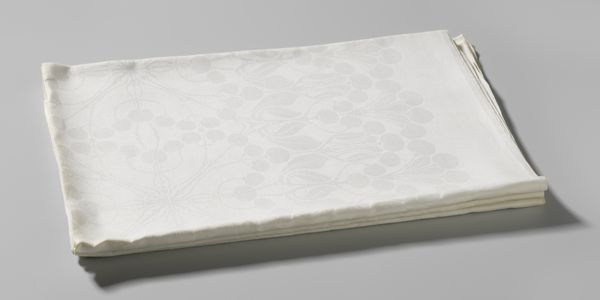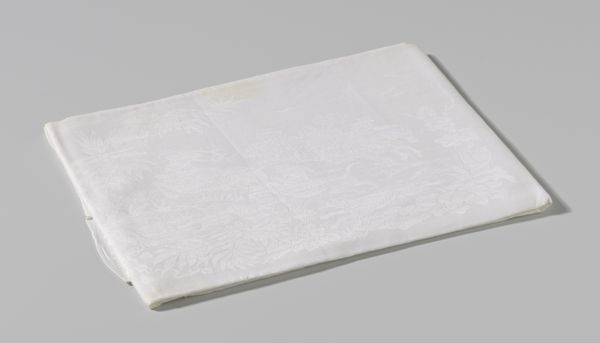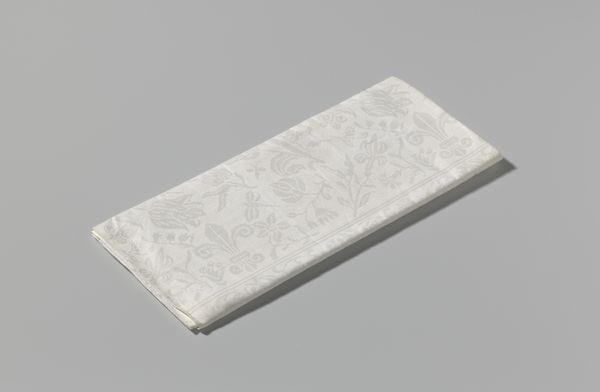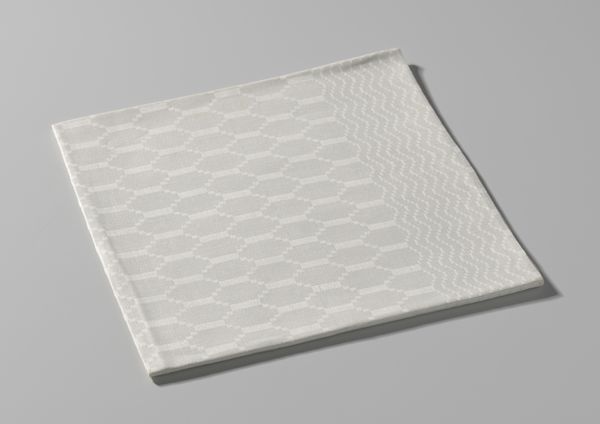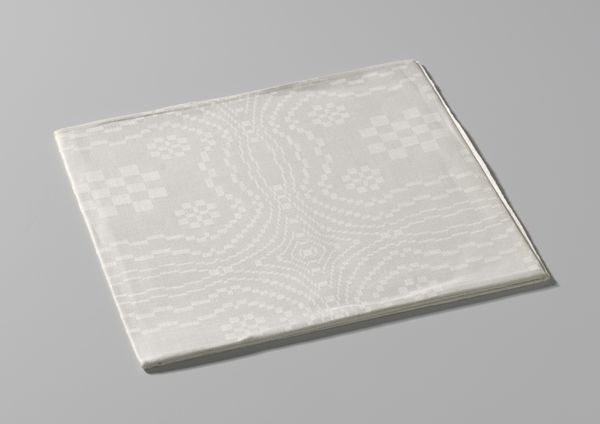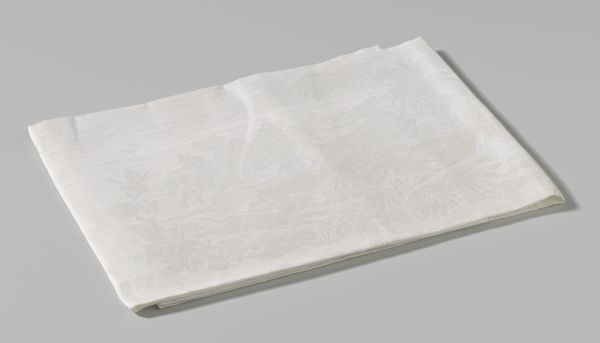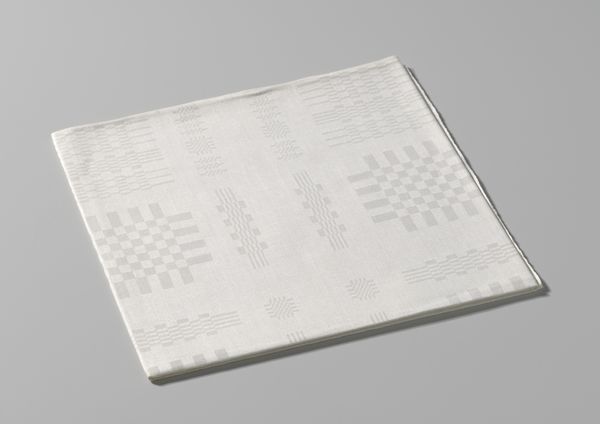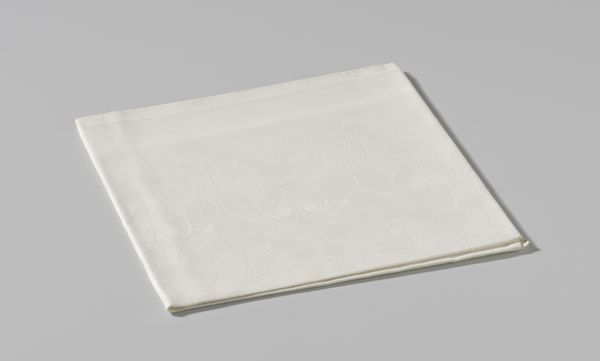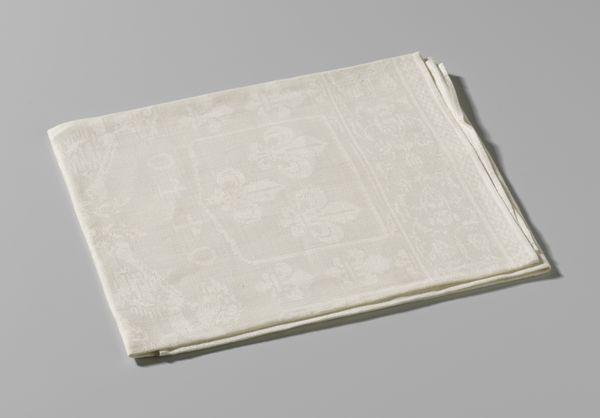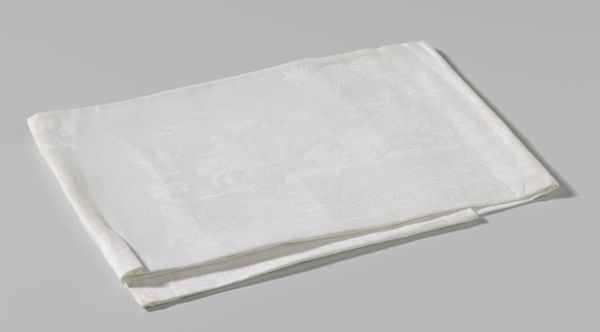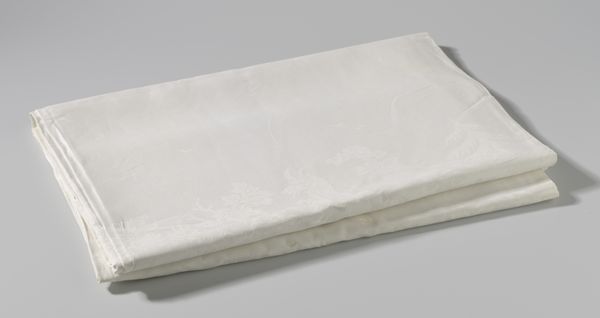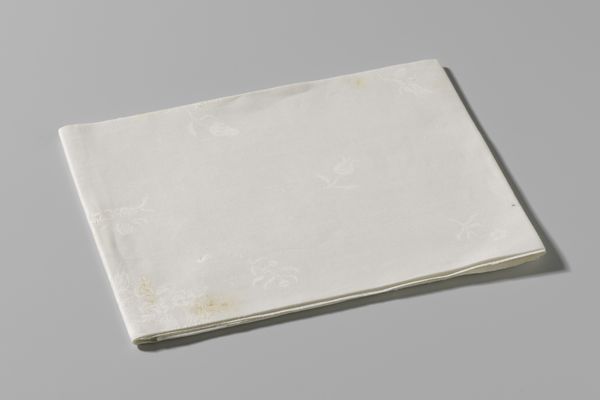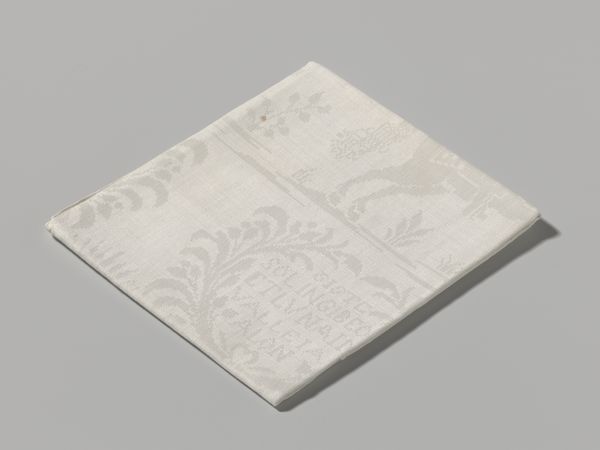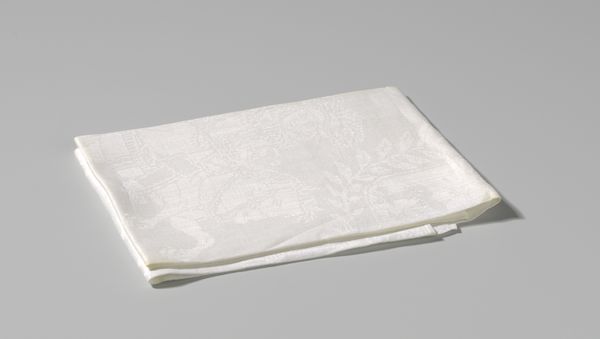
weaving, textile
#
weaving
#
textile
Dimensions: length 175 cm, width 175 cm
Copyright: Rijks Museum: Open Domain
Editor: Here we have a linen damask tablecloth with strawberries by Chris Lebeau, dating roughly from 1878 to 1945. The repeated strawberry motif gives it such a delicate and ornate feel. How do you interpret the purpose and place of an object like this in its time? Curator: It’s fascinating to consider textiles within a social context. In the late 19th and early 20th centuries, pieces like this weren’t merely functional; they were powerful signifiers of domestic ideals and social standing. Can you imagine the impact a pristine, patterned tablecloth like this had on guests? Editor: It does evoke a certain formality. Were these table linens exclusively for the upper classes, or did their production and distribution have a broader impact? Curator: That's a key question. While the *ownership* was often linked to middle and upper classes who could afford these decorative items, the *production* involved a vast network of labor. Consider the textile mills, the designers, the merchants – this single tablecloth connects to a complex web of social classes and economic systems. It prompts us to question labor practices and the relationship between consumerism and social hierarchy. How might Lebeau's design aesthetic engage with this socio-economic landscape? Editor: So the “Pattern and Decoration” is not only aesthetic, it’s inherently political. Thinking about it as an artwork on display in the Rijksmuseum adds another layer, doesn't it? It elevates a functional object, inviting us to see it through this critical lens. Curator: Precisely. Its presence here redefines notions of art versus craft, high culture versus domestic sphere, underscoring how museums shape what we value and how those values are tied to cultural narratives. Editor: This has made me rethink my assumptions. I came expecting pretty decoration, but now I see layers of social and political meaning embedded in this tablecloth. Curator: It's a perfect reminder that even everyday objects carry a rich history and speak volumes about the societies that produced and used them.
Comments
No comments
Be the first to comment and join the conversation on the ultimate creative platform.
